 |
||
|
||
| ||
 Contents
The Gigabyte MAYA AP64D-H RADEON 8500 Deluxe was reviewed here several months ago, and now the name of MAYA is again thrown light on. This time it has arrived with its colleague - a card from Guillemot (Hercules)... By the way, we have already reviewed a prophet "who" heralded arrival of the RADEON 8500 - Hercules 3D Prophet 8500LE. 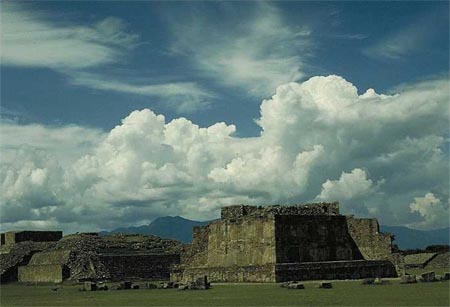 ...To live, to cognize, and to contribute to life again... Intelligent and often open faces of people of those Far Times, that epoch of Maya creep in our enlightened and filled with progress brains, like ghosts... They just wanted to know what was there, beyond the bounds of what they were used to see and understand. The mystery of that time seized a strong hold on the minds of these people as well, that is why, at first glance, the ruins of that epoch do not differ much from, for example, Ancient Greece... 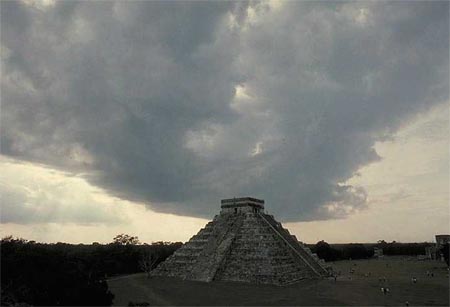 But this is not so. The more the contemporary studies the Maya's legacy, the more the world of those people gets unveiled, and the more there are mysteries - the mysteries beyond the power of most academics of the world. 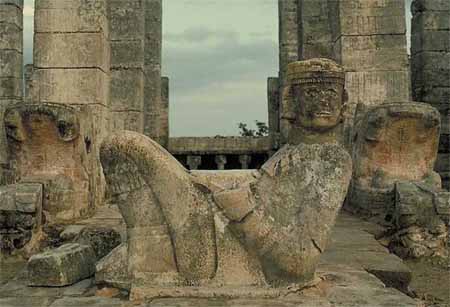 There is something attractive in it. I want much to get in those temples and find out why, how, where and how selflessly... Prophets of that time stood high esteem in their homeland... Again I see how interesting can be names the manufacturers give their cards. Gigabyte with its Maya. Prophet of Hercules. At least, it attracts more than such names as Evil, Devil, Voodoo and so on. Now, before the deep analyses, let's take a look at the reviews of RADEON 8500 based cards published at our site. Theoretical materials and reviews of video cards which concern functional properties of the ATI RADEON 8500/7500 GPU
As you can see, today we will test two video cards, almost the most powerful among RADEON 8500 based products. Both come with 128 MBytes memory, and work at 275/550 MHz. But are they really so identical? CardsBoth cards have an AGP x2/x4 interface, 128 MBytes DDR SGRAM located in 8 chips on the front side of the PCB.
Both cards follow the reference design from ATI. But the Gigabyte's card has a second RAMDAC.  If earlier the second RAMDAC was normal, today it is a big advantage. Even ATI doesn't consider that it is necessary. And the Hercules card doesn't have it. Fortunately, such feature of RADEON 8500 based cards as RAGE THEATER is not removed :-). Otherwise, one would have to say goodbye to TV-out.  By the way, lack of the second RAMDAC doesn't make it impossible to display images right on two monitors; the difference is only that you can't change a resolution on the second monitor separately from the first. It also refers to displaying images on a monitor and a TV screen. As we mentioned a lot of times already, all video cards of the latest
generations differ mostly in coolers - this is the field the designers
give free play to their imagination.
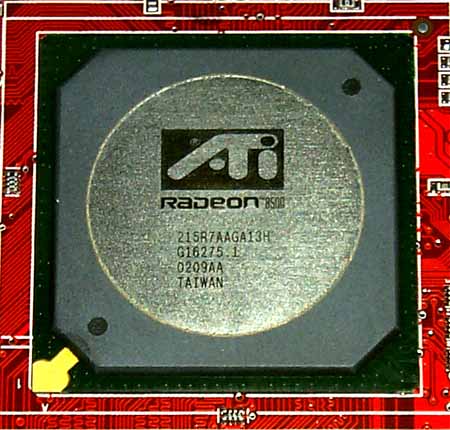 Both GPUs are identical. Sky-blue color of the Hercules card is used for quite a long time already, but red color of Gigabyte appeared only when the company turned to production of ATI GPU based cards. Before that the Gigabyte cards were also blue (I noticed that the PCBs were similar yet in examination of the GeForce3 Ti 500 cards from the same two companies, and in one more review). Both cards have DVI and d-Sub connectors unsoldered; the S-Video connector of the TV-out is also provided. The cards ship together with S-Video-to-RCA adapters. The TV-out quality of such cards was already estimated earlier (see the list above). Now let's take a look at the accessories the cards ship with.
Overclocking
Have you noticed the excellent potential of the Hercules? However, later you will see that due to some reasons this video card works much slower than the Gigabyte's solution; and even such overclocking brings in almost the same gain as that of the second card at up to 300/600 MHz. Note:
 The "Note" above is brought into each article so that you understand that overclocking is not a rated mode, and you should protect your card from early damages. The tested cards work in this mode without additional cooling as well. Test system and driversTestbeds:
The test system was coupled with ViewSonic P810 (21") and ViewSonic P817 (21") monitors. The cards come with ATI's drivers of the 6.025 (7.66) version, demo programs and HydraVision utility. The Gigabyte's card also has a program for overclocking - VTuner:  The Hercules has a very pleasant utility - 3D Tweaker:  In the tests we used ATI's drivers of the 6.071 version, as well as drivers of the new series - CATALYST 6.094. VSync was off, S3TC was off. For comparison we used the following cards:
I will explain why I used the SUMA's cards. The first one is a usual GeForce4 Ti 4200 based solution. Although it has only 64 MBytes memory it is a very strong competitor because of its rather low price. The other card possesses higher memory frequencies, but it also costs like 128 MBytes RADEON 8500 cards. Comparison with more powerful and expensive GeForce4 Ti 4400/4600 cards can be found in our 3Digest. Test resultsBefore we start examining 2D quality I should say that there is no a complete technique of objective estimation of this parameter because:
As for the tested samples, together with the ViewSonic P817 monitor and BNC Bargo cable the cards showed excellent quality at the following resolutions and frequencies: 1600x1200x85 Hz, 1280x1024x100 Hz. For estimation of 3D performance we used:
The tests were carried out in the 32bit mode. For estimation of anisotropic filtering quality we also used some more games, see details below. Peculiarities of the Catalyst driversThe new drivers have the control panels changed much, the settings are, as much as possible, brought to one panel. The 3D quality settings are set to the maximum only in Direct3D. In the OpenGL the texture quality is set to Quality, instead of High Quality. 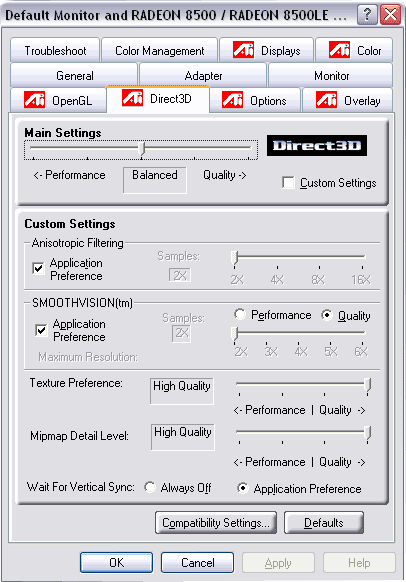 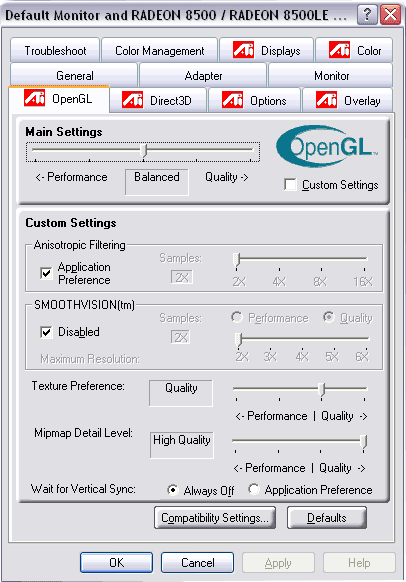 We estimated the difference and found out that in High Quality the performance drops much, though quality doesn't get improved considerably:
So, the question is why the performance falls down so much? How to test it, taking into account that according to our rules quality must be set to its highest level? During the tests in this driver version we found out that the AA and anisotropic filtering didn't work in Direct3D. That is why we decided to use the 6.071 version, which is also WHQL. Later, in the performance section you will see the speed difference between the 6.094 and 6.071 versions (the tests on the 6.094 version were carried out at the default texture quality - Quality). Starting from this version ATI divided the driver suites for video cards "Built by ATI" (produced by ATI) and "Powered by ATI" (produced by ATI's partners). We tested the cards in both Catalyst versions and found no differences (only when we tried to install the "Built by ATI" drivers onto the Hercules card the software failed to define the card and offered a list of cards where we chose RADEON 8500, and only after that the drivers worked flawlessly). Performance3D Mark2001 SEGame1 Low Details 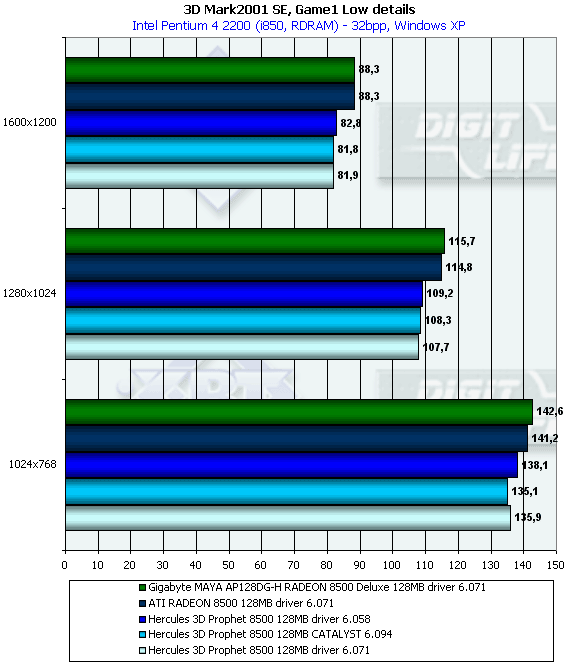 The first test shows that such excellent overclocking doesn't help the Hercules 3D Prophet 8500 128 MBytes card in comparison with the Gigabyte's one. Note that at the rated frequencies the card from the European company falls behind its Asian brother. We asked the manufacturer and found out that it was because of the Samsung memory (although the access time is lower); the Gigabyte has the Hynix memory and the ATI comes with Infineon's solution. Well, this is the timing to blame. The differences between the drivers' versions are minimal. Both cards, being dearer than the 128 MBytes SUMA's solution, fight perfectly, especially with the anisotropic filtering enabled. Its quality will be examined later. Game2 Low Details 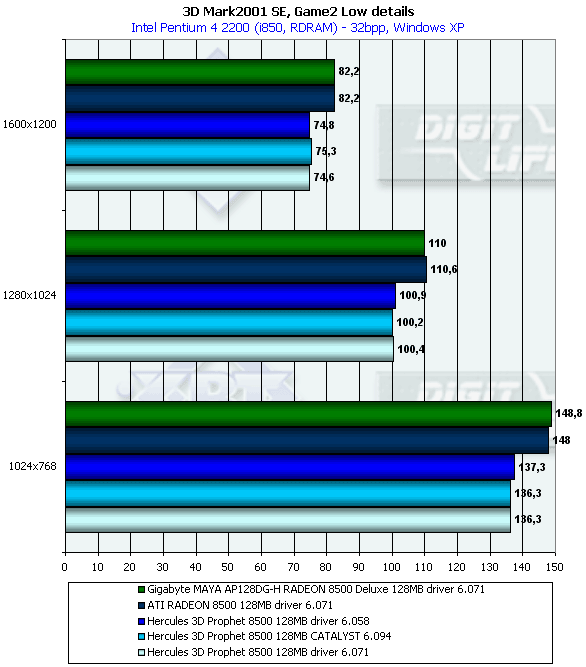 This test shows that the cards in question lose to the GeForce4 Ti 4200 based competitors, though quite little. Only the anisotropy helps the Hercules and Gigabyte cards take the lead. Note that the Hercules 3D Prophet 8500 128 MBytes falls a little behind its siblings. The differences between the drivers' versions is minimal as well. Game3 Low Details 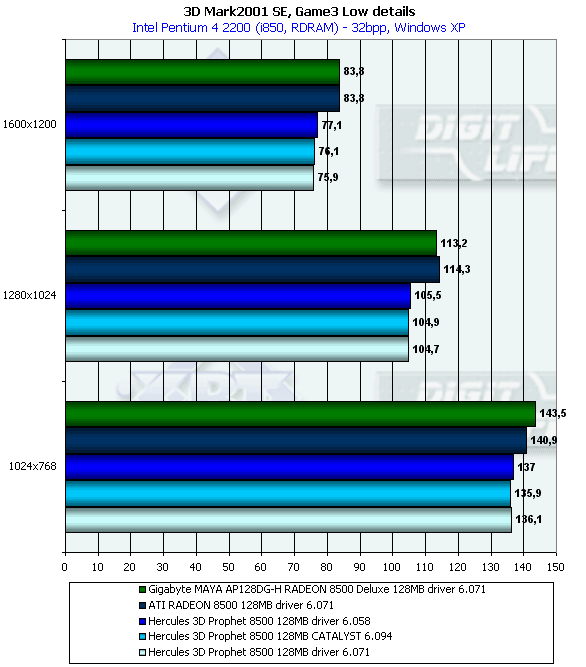 The situation is almost similar. Game4 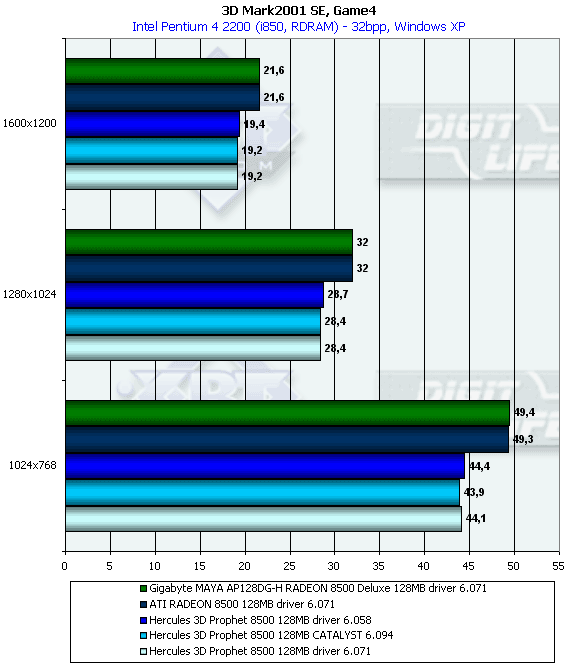 This is the tests where ATI RADEON 8500 based cards thrive. That is why these cards have easily beaten their competitors. 3D MARKS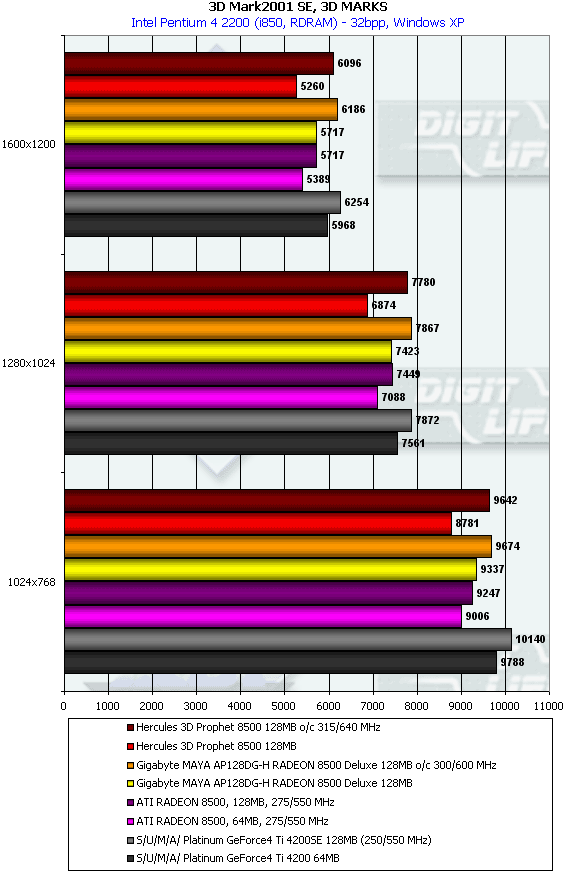 Let's make a conclusion on the 3DMark2001SE test - in 1024x768 the palm belongs to the SUMA cards, but as the resolution grows its margin falls down and almost vanishes in 1600x1200. The Hercules video card comes very close to its sister from Gigabyte which works at a lower frequency. Remember that this is not a drawback of this card, but just its peculiarity. Maybe another sample with another memory will have the same performance level, as the ATI's card has. Unreal Tournament 2003 DEMOWe used not the final version of the DEMO, that is why right after its release we will repeat the tests. First take a look at some screenshots. The game uses much vertex shaders, without the hardware support of which the accelerator's speed falls down considerably.  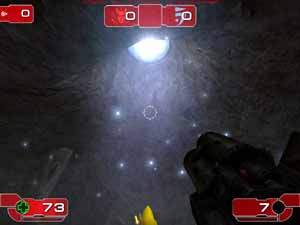   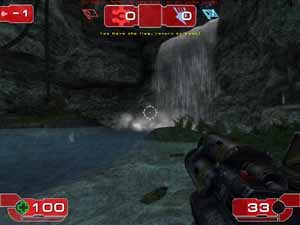 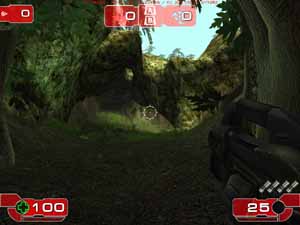 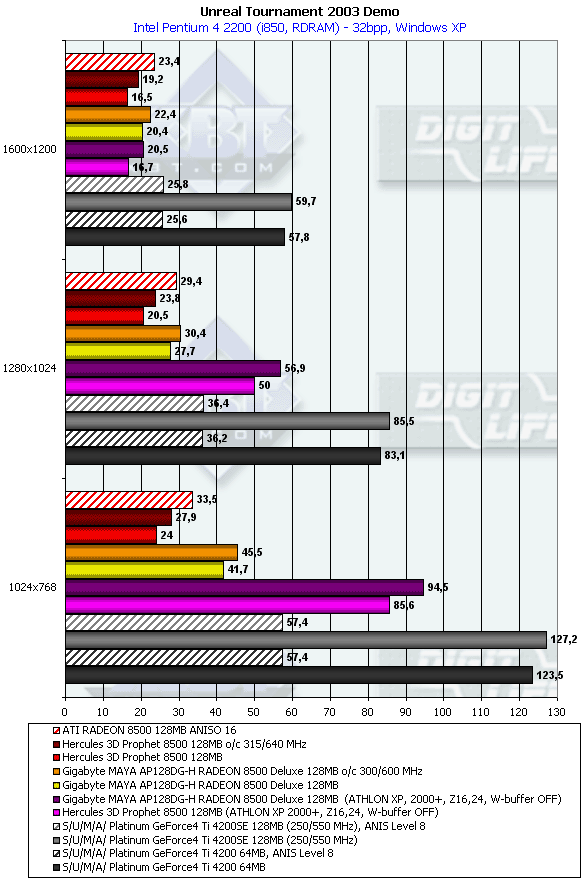 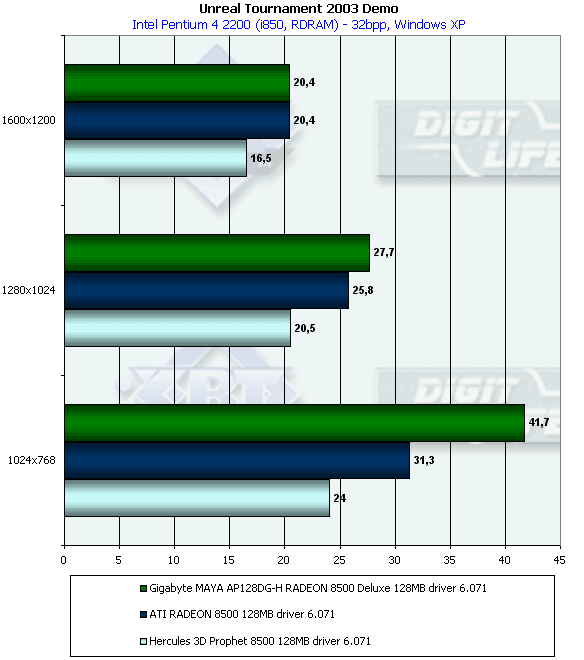 The situation is very interesting:
Addition! It turned out that such strange situation with the performance of the RADEON 8500 occurs when the W-buffer and Z32 are enabled. When the Z16,24 is used and the W-buffer is not it becomes much better for these cards, but only on the VIA KT333 (AthlonXP) testbed. On the i850 (Pentium 4) platform it remains all the same. Comanche4 DEMO 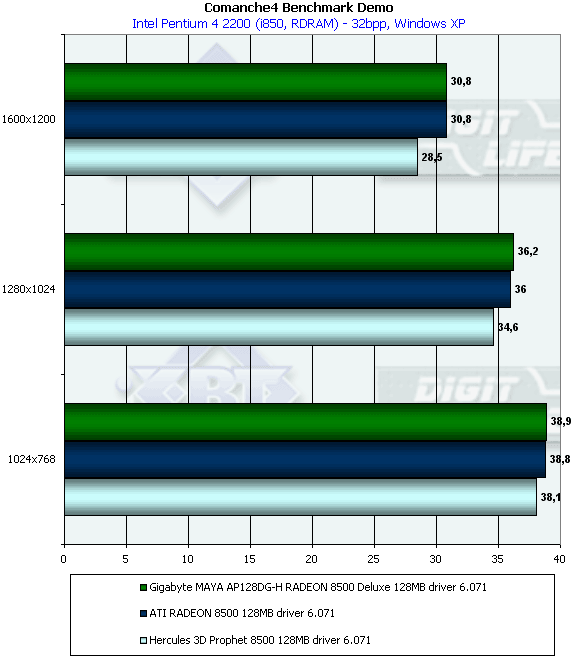 The GeForce4 Ti 4200 cards lead again in 1024x768 and lose their advantage as the resolution increases. But the 128 MBytes card from SUMA is still fighting perfectly. The difference between the RADEON 8500 based cards is lower in this test. Return to Castle Wolfenstein  The Gigabyte has a very marginal lead. The Hercules goes on a par with the GeForce4 Ti 4200. Serious Sam: The Second Encounter  The SUMA Platinum GeForce4 Ti 4200 SE 128 MBytes is a winner in this race, the 64 MBytes model keeps a leading position only up to 1600x1200, and in this resolution it scores the same results as the Gigabyte MAYA AP128DG-H RADEON 8500 Deluxe 128 MBytes. The Hercules' solution falls behind a little. But the anisotropy lets the RADEON 8500 based cards win again. Anisotropic filtering qualityAs we mentioned before, anisotropy of the RADEON 8500 doesn't take much resource as compared with that of the NVIDIA. In the NVIDIA GeForce4 Ti review we showed the difference between realizations of this function of ATI and NVIDIA. It's also shown in our 3Digest. Anisotropy of ATI is not complete: at some viewing angles some surfaces are not processed. We already showed some screenshots in the 3DMark2001, where it was well seen (probably except the Game2). Below you will see, by the example of some games, what problems can occur with the anisotropy enabled in case of the RADEON 8500. The S/U/M/A GeForce4 Ti 4200 review gives some examples of anisotropic quality of the RADEON 8500 in Serious Sam: The Second Encounter: 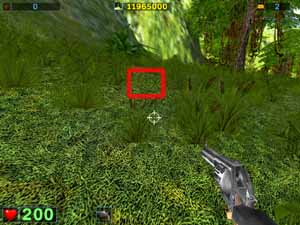 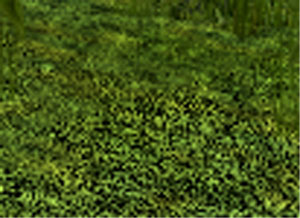 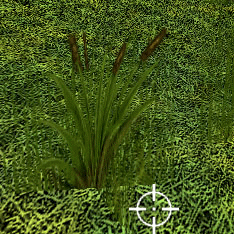 These screenshots, including the animated GIF, show that the anisotropy of the RADEON 8500 disappears as the distance grows. Next time, in the Jetway RADEON 8500 card review, I will take a closer look at this game. We have examined only a small part of examples of different realizations of anisotropy from ATI and NVIDIA. Next time we will give more screenshots from real games. I must say that on the whole the ATI's anisotropy is better in quality than the NVIDIA's one, in particular, in some games on the Unreal engine. There are a great deal of games where the difference is hardly noticeable, which is a great advantage of the RADEON 8500 taking into account its modest appetite. ConclusionSo, what can we say about anisotropic filtering of the RADEON 8500? Some will consider these drawbacks unimportant - its cost is more significant for them. Some get irritated at such imperfections. They value quality much more than speed. Well, everyone chooses what he wants. The cards in question are really flagships of what ATI has ever released! Today, when no RV250/R300 based cards have yet appeared, they are the most powerful accelerators from ATI. Although they are close in speeds only to the GeForce4 Ti 4200 (and some Ti 4400 are already priced like the SUMA Platinum GeForce4 Ti 4200SE 128 MBytes), these cards have well balanced capabilities. As a user, not tester, I like these cards very much, and if I had $220-230 for a video card I would take one of them. I think they are enough powerful to neglect some lag of the Hercules caused by the Samsung memory. When such function as anisotropy or AA is enabled all such gaps disappear. Both cards are of high production quality and can also boast of perfect 2D quality, a good overclocking potential, pleasant appearance and package. In our 3Digest you can find complete comparison characteristics of video cards of this and other classes. Highs:
Lows:
Write a comment below. No registration needed!
|
Platform · Video · Multimedia · Mobile · Other || About us & Privacy policy · Twitter · Facebook Copyright © Byrds Research & Publishing, Ltd., 1997–2011. All rights reserved. | |||||||||||||||||||||||||||||||||||||||||||||||||||||||||||||||||||||||